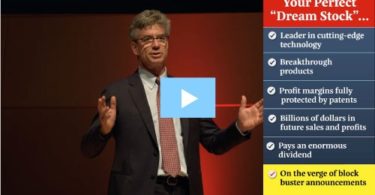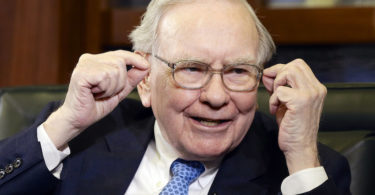Company Overview & Pipeline
Nektar Therapeutics (NASDAQ: NKTR) is a clinical-stage biotech focused on immunology, developing therapies to correct immune dysfunction in autoimmune and inflammatory diseases ([1]) ([2]). Its lead candidate is rezpegaldesleukin (REZPEG, NKTR-358), a novel biologic designed to stimulate regulatory T-cells (Tregs) and restore immune balance ([1]) ([1]). REZPEG is currently in two Phase 2b trials – one for moderate-to-severe atopic dermatitis (eczema) and another for severe alopecia areata ([2]). Notably, REZPEG is wholly owned by Nektar after the company regained full rights from former partner Eli Lilly in 2023 ([1]) ([3]).
In February 2025, the FDA granted Fast Track designation to REZPEG for moderate-to-severe atopic dermatitis, reflecting its potential to address a serious unmet need ([1]). Fast Track status enables closer FDA guidance and eligibility for accelerated review processes, potentially speeding development and approval ([1]). Nektar announced top-line Phase 2b results in June 2025: REZPEG met its primary endpoint, achieving significant eczema severity score improvements versus placebo, along with positive secondary outcomes (proportions of patients reaching clear skin and itch reduction) ([2]). In the 16-week trial, the high-dose REZPEG arm showed a ~61% improvement in disease severity (EASI score) versus ~31% for placebo, and about 42% of patients achieved an EASI-75 response (75% skin improvement) versus 17% on placebo ([4]) ([4]). These results position REZPEG as a potential challenger to the current standard Dupixent® (Regeneron/Sanofi) in eczema ([4]) ([4]). The drug’s mechanism is distinct: rather than blocking an inflammatory cytokine, REZPEG boosts Tregs to calm inflammation, which management touts as a “new biology” for inflammatory disorders ([4]). Encouragingly, early data suggest REZPEG’s effects may be durable – in a Phase 1b, patients maintained improvements for ~36 weeks after a 12-week treatment course ([1]) ([3]).
Start collecting royalty checks before the first national payout.
Step 1
Learn the exact royalty play paying monthly checks
Step 2
Start with as little as $50 — get paid next month
Step 3
Position yourself before Wall Street moves in
Following the eczema trial success, Nektar also secured Fast Track designation for REZPEG in alopecia areata in July 2025 ([5]) ([2]). A Phase 2b alopecia readout is expected by late 2025, and 52-week eczema trial data (longer-term maintenance results) are due in early 2026 ([5]) ([5]). The company is expanding its Treg-focused pipeline with preclinical programs NKTR-0165 (a TNFR2 agonist aiming to stimulate tissue-specific Tregs) and NKTR-0166 (a bispecific antibody targeting TNFR2 and another pathway) intended for clinical entry in 2026 ([5]) ([5]). Nektar also continues development of NKTR-255, an IL-15 agonist for cancer immunotherapy, via collaborator-sponsored trials (e.g. in CAR-T enhancement) ([2]) ([2]). Overall, Nektar’s strategic focus is now squarely on these immunology programs after a major restructuring in recent years to pivot away from prior oncology efforts.
Dividend Policy & Shareholder Returns
Nektar does not pay any dividend. As a pre-commercial biotech with recurring losses, it has never declared cash dividends – all resources are reinvested into R&D and operations. The current dividend yield stands at 0.00% ([6]) ([6]). This policy is typical for early-stage biotechs, and Nektar is likely to continue prioritizing its pipeline over shareholder payouts. The company has occasionally used share repurchases in special cases (for example, buying back a small block of shares from Bristol-Myers Squibb after a partnership ended) ([7]), but generally there are no ongoing buyback programs. For investors, any return on NKTR will hinge on stock price appreciation tied to clinical and regulatory success, rather than dividend income.
Notably, Nektar executed a 1-for-15 reverse stock split in June 2025 ([2]) to bolster its per-share price. This financial maneuver, which temporarily lifted NKTR’s stock price by reducing shares outstanding, underscores the challenging equity market conditions Nektar faced prior to the REZPEG trial win. The reverse split enabled Nektar to maintain NASDAQ listing compliance after its stock had languished at low levels. While purely technical, the reverse split is a reminder of the stock’s past volatility and the dilution risk inherent in funding biotech development.
Financial Position: Cash Runway, Leverage, and Coverage
Capital Resources: Nektar’s financial health improved following the positive REZPEG data and a mid-2025 equity raise. As of June 30, 2025, Nektar held $175.9 million in cash and investments ([2]). Shortly after Q2, the company raised an additional $115 million gross (≈$107.5M net) through a public stock offering in July 2025 ([5]) ([5]). Pro forma cash on hand, including the raise, exceeded $280 million, which management expects is sufficient to fund operations into Q1 2027 ([2]). This projected runway of ~18+ months provides breathing room to advance REZPEG through Phase 2 completions and prepare for Phase 3 without immediate financing pressure ([5]) ([5]). It’s a notable improvement from prior guidance – for example, after a 2022 restructuring Nektar had forecasted cash lasting into H1 2025 ([8]) ([8]), so the recent financing and cost cuts have extended the horizon by about two years.
Debt and Leverage: Importantly, Nektar carries no traditional debt on its balance sheet ([8]). The company has avoided bank loans or convertible bonds to date, relying instead on partnerships, asset sales, and equity financing for capital. This means no looming debt maturities or interest payments that could strain its cash flows. Nektar’s total liabilities were $232 million as of Q2 2025, but these largely consist of operational items like lease obligations and a special royalty financing liability (discussed below) ([2]) ([2]). With no interest-bearing loans, interest coverage ratios are a non-issue – Nektar’s operating losses, not debt service, are the primary cash drain.
However, Nektar does have an unusual liability related to royalty monetization. In late 2020, the company sold its rights to certain drug royalties (for Adynovate® and Movantik®) for $150 million upfront ([9]). Accounting-wise, that deal is treated as a debt-like obligation repaid through foregone royalties. On the balance sheet this is the “liability related to sale of future royalties,” which stood at $80.6 million (net) as of mid-2025 ([2]) ([2]). As Nektar’s partners sell those products, Nektar books non-cash royalty revenue and the liability amortizes down. For example, in Q2 2025 Nektar recognized $11.2 million of non-cash royalty revenue, which reduced the royalty liability accordingly ([2]). This liability does accrue an effective interest expense (imputed at roughly $6 million per quarter) ([7]), but it does not require Nektar to pay cash interest; the “repayment” happens automatically via the royalty stream. In short, while Nektar is free of conventional debt, investors should be aware of this $80M obligation and the fact that a portion of future royalty inflows (from legacy products) won’t reach Nektar’s coffers due to this financing arrangement.
Liquidity & Coverage: With ~$283M in pro forma cash, Nektar appears adequately capitalized for its near-term needs. The company’s quarterly cash burn has been trending around $40–50 million recently ([5]) ([5]). Notably, Nektar has aggressively cut costs: total operating expenses in Q2 2025 were $47.4M, down 35% year-on-year due to restructuring and the sale of its manufacturing facility ([2]) ([2]). R&D expense held steady (~$30M in Q2) as Nektar maintained investment in REZPEG and pipeline programs ([2]), while SG&A and one-time charges were reduced. This leaner cost structure, combined with the new funds, extends its cash coverage to roughly 6–7 quarters of operation at the current burn rate ([5]) ([5]). Nektar thus has a solid window (into early 2027) to achieve key milestones – like completing Phase 2 trials and potentially initiating Phase 3 – before needing additional capital. If the pipeline progresses well, Nektar could secure a partnership or raise more funds at a (hopefully) higher valuation, thereby mitigating dilution. Conversely, any major setbacks could force the company to seek cash sooner on less favorable terms.
Valuation and Upside Potential
Market Valuation: Nektar’s stock price and market capitalization have swung dramatically on REZPEG’s prospects. Before the recent trial success, NKTR was deeply depressed – the stock had to undergo a reverse split to stay listed, and it traded near all-time lows. The breakthrough Phase 2b eczema results in June 2025 triggered a massive re-rating: NKTR shares rocketed +287% in under a week, jumping from the single digits (split-adjusted) to over $30/share ([4]). Analysts responded with exuberant upgrades – for example, H.C. Wainwright raised its price target from $6.50 to $120 (post-split) and Jefferies hiked theirs from $2 to $69, seeing multi-bagger potential if REZPEG succeeds ([4]) ([4]). Even after this rally, Nektar’s market cap (mid-2025) remained modest (~$500–600 million) relative to the blockbuster market it’s targeting. By comparison, Dupixent – the incumbent eczema biologic – achieves >$10 billion in annual sales and its developers are valued in the tens of billions. Investors bullish on Nektar see REZPEG’s long-term opportunity as transformational: if REZPEG can capture even a fraction of the eczema market (and possibly other autoimmune indications like alopecia), Nektar’s current valuation could prove very low in hindsight ([4]). The Fast Track designation adds to this optimism by signaling FDA’s interest in expediting the therapy ([1]).
That said, valuation must be balanced against risks. Nektar today has no approved products and only nominal revenue from old royalties – essentially the entire company’s value hinges on the future of REZPEG and its pipeline. Cash on hand (~$280M) covers a few years of burn but does not come close to the investment needed for Phase 3 trials and commercialization. Unless a deep-pocketed partner comes on board, Nektar will likely issue more equity or other financing to fund late-stage development, which can dilute existing shareholders. It’s also worth noting that some analysts remain cautious despite the Phase 2 success – for instance, William Blair retained a more conservative view, arguing that REZPEG’s differentiation from Dupixent is still unclear and that the stock’s surge might already reflect fair value for the data shown ([4]). In sum, NKTR’s valuation embeds high expectations but also high uncertainty. The stock is susceptible to dramatic moves with each data release or regulatory update. At current levels, investors are effectively betting that REZPEG will advance smoothly into Phase 3 and ultimately to market, unlocking multi-billion dollar sales potential that could “skyrocket” Nektar’s worth. This asymmetry – a relatively small enterprise value now versus a very large prize if all goes well – underpins the bullish case, with Fast Track status and strong Phase 2 data tilting the odds more favorably than a year ago.
Key Risks and Red Flags
Despite the promising outlook for REZPEG, Nektar faces significant risks typical of biotech ventures, as well as some unique challenges:
– Regulatory & Clinical Risk: REZPEG must still navigate Phase 3 trials and regulatory approval. Fast Track designation can accelerate the process but does not guarantee approval or success ([2]). There is always a risk that larger trials could yield disappointing efficacy or reveal safety issues not seen in Phase 2. For example, earlier studies (including a Lilly-run trial in lupus) reported injection site reactions (ISRs) in many patients on REZPEG ([4]). Lilly cited that 85-100% of healthy volunteers experienced ISRs (some as large as grapefruit-sized welts), versus ~10% rates for Dupixent ([4]). While Nektar disputes some of these findings (attributing data to “botched math” by Lilly’s CRO) ([4]) ([4]), injection-site tolerability will be closely scrutinized in upcoming studies. If REZPEG causes severe or frequent injection reactions, it may struggle to compete commercially against more tolerable options. Additionally, the long-term safety of stimulating Tregs is not fully established – unforeseen immune effects could arise with prolonged dosing. Any hiccup in the 52-week eczema data (due early 2026) or alopecia trial could dampen enthusiasm or delay development.
– Litigation and IP Overhang: A bitter legal battle with Eli Lilly poses an overhang on Nektar. After Lilly terminated their partnership in 2023, Nektar sued Lilly alleging breach of contract, sabotage of the program, and data manipulation; Lilly countersued denying wrongdoing ([4]) ([4]). The dispute includes contention over joint patents: certain REZPEG dosing regimen patents filed in 2022 are co-owned by Lilly ([4]). While Nektar insists this won’t hinder its freedom to operate, overlapping IP could complicate commercialization or require a settlement. The case is heading to a jury trial set for October 2025 ([4]). Ongoing litigation is costly (legal expenses contributed to G&A rising slightly ([2])) and introduces uncertainty – an unfavorable outcome could result in financial damages or even encumbrances on REZPEG’s rights (though Lilly has formally returned all development rights). At minimum, management distraction and negative headlines from this feud are a risk factor. Investors should watch for any settlement or verdict, as it may impact Nektar’s valuation or partnership prospects.
– Financial and Dilution Risk: Nektar’s lack of profitable operations means it will continue burning cash for the foreseeable future. The company expects its current cash to last into early 2027 ([2]), but pivotal Phase 3 trials for REZPEG (in two indications) could easily consume hundreds of millions of dollars. Unless Nektar secures a rich partnership or co-development deal, it will likely need to raise capital again to fully fund Phase 3 and launch. That could mean substantial share dilution ahead. The 2025 secondary offering already diluted existing shareholders (the share count rose by ~30% after the offering) and future raises could do the same. If market conditions worsen or trial results are incremental rather than spectacular, Nektar might have to raise money at a lower stock price, compounding dilution. Also, if REZPEG moves toward approval, Nektar would need to build commercial infrastructure or cede a big revenue slice to a marketing partner – either way, additional funding or cost will be required to monetize any success.
– Competitive Landscape: The atopic dermatitis treatment space is highly competitive and evolving. Dupixent is entrenched as a first-line biologic for moderate-to-severe eczema, with a well-known efficacy and safety profile. Several new therapies are emerging: Lilly’s own lebrikizumab (an IL-13 inhibitor) is in late-stage development for eczema, JAK inhibitors (oral drugs like upadacitinib and abrocitinib) are approved for severe cases (though with safety warnings), and other novel biologics are in trials. REZPEG will need to demonstrate a clear advantage – e.g., better long-term disease control or dosing convenience (it may be given quarterly during maintenance) – to gain market share ([3]) ([3]). If REZPEG’s differentiation remains marginal (as some skeptics like the Blair analyst suggest ([4])), uptake could be slow even if approved. The same holds in alopecia areata, where competitors like JAK inhibitors (e.g. baricitinib) are making headway. Thus, commercial risk is real: Nektar might develop a great drug but still face challenges displacing or complementing existing treatments, especially as a smaller company with limited marketing experience.
– Execution and Historical Red Flags: Investors may also be wary of Nektar’s track record. The company’s prior flagship program, bempegaldesleukin (an IL-2 cytokine for cancer), ended in failure – it was abruptly discontinued in 2022 after Phase 3 trials (partnered with Bristol-Myers) fell short. That episode led to massive write-offs, layoffs (70% workforce cut ([8])), and a collapse in NKTR’s stock (hitting multi-year lows). While REZPEG is a different program in a different disease area, the over-optimism and subsequent disappointment with bempeg (and a pain drug, NKTR-181, that failed to win approval) has made the market more cautious on Nektar. Management credibility will need to be rebuilt by executing well on the new strategy. The reverse stock split in 2025 is another red flag that highlights how dire sentiment had become. Furthermore, Nektar’s stock is volatile and largely driven by news flow – it can swing wildly on speculation, which is a risk for investors with low risk tolerance. Finally, Nektar’s negative book equity as of Q2 2025 (shareholder deficit of $24M due to accumulated losses) illustrates that the company has burned through substantial capital over the years with little to show in revenue ([2]). Until a product like REZPEG reaches market, Nektar will remain financially dependent on external funding.
Open Questions and Outlook
Is REZPEG truly a game-changer for eczema? The Phase 2 data are encouraging, but Phase 3 will tell if the drug’s novel Treg mechanism delivers sustained, clinically meaningful benefits over standard of care. A key question is whether REZPEG can induce remission or durable responses that allow less frequent dosing (the 36-week off-therapy improvements hint at a remittive potential ([1])). If so, it could carve out a valuable niche even in a Dupixent-dominated landscape. The upcoming 52-week data in early 2026 will be crucial – demonstrating long-term safety and enduring efficacy could validate REZPEG as a first-in-class therapy that “resets” the immune system rather than requiring continuous suppression ([5]) ([5]).
What is Nektar’s plan for Phase 3 and commercialization? Management will need to decide whether to partner REZPEG or advance alone. Going solo offers more reward (keeping all profits) but is challenging for a small company – large trials and global marketing in dermatology would stretch Nektar’s capabilities and finances. A partnership with a big pharma (or re-partnering with Lilly if fences mend) could provide the resources to maximize REZPEG’s potential, though likely at the cost of sharing revenue. Investors are watching for signals of partnership discussions or a strategic deal as the Fast Track status and Phase 2 success make REZPEG more attractive to potential partners. Another question is the timeline to Phase 3: Nektar has said it will work with the FDA on Phase 3 design once Phase 2b is fully complete ([1]). Will they initiate Phase 3 in 2026, and in which indications (atopic dermatitis first, or alopecia too)? The design (dose selection, comparator arms, etc.) will also matter for commercial positioning.
How will the Lilly lawsuit resolve? By late 2025, this legal saga will come to a head. An out-of-court settlement could remove the uncertainty – perhaps Lilly might even agree to a royalty on future sales or a one-time payment to Nektar, depending on the strength of each side’s case. Conversely, a contentious trial could air dirty laundry and distract management. The outcome (even if it doesn’t directly impede REZPEG’s development) might influence Nektar’s valuation and negotiation leverage with other partners. It’s an open question whether the lawsuit is merely a sideshow or could materially impact Nektar’s future (e.g., through damages or enforceable patent claims). Investors will be keen for any hint of resolution.
What is the fate of Nektar’s other programs? While REZPEG commands center stage, Nektar’s pipeline depth could add value if other candidates progress. The company’s TNFR2 agonist (NKTR-0165) and bispecific NKTR-0166 are slated for IND filings in 2026 ([5]) – can Nektar advance these without diverting focus from REZPEG? These programs aim to broaden the Treg platform and could be partnered or spun off if attractive. Likewise, NKTR-255 in oncology remains partnered in trials ([2]); any success there (for example, positive data in CAR-T enhancement in lymphoma as hinted by early findings ([2])) could generate milestone payments or rekindle Nektar’s oncology relevance. How management allocates resources between the flagship REZPEG program and these earlier-stage assets is an open question. Ideally, REZPEG’s progress will lift all boats, but there’s a risk that non-core projects languish or consume cash without near-term returns.
In conclusion, Nektar Therapeutics finds itself at a pivotal moment. The FDA’s Fast Track nod and strong mid-stage data for REZPEG have injected new life into the company, supporting the notion that this eczema therapy could be a breakthrough that reinvents Nektar’s fortunes ([5]) ([5]). The path ahead still holds substantial risk – clinical, regulatory, financial, and competitive. Yet, the risk-reward equation appears dramatically improved from a year ago. Investors should keep a close eye on upcoming milestones: resolution of the Lilly dispute, the alopecia trial results, partnership developments, and of course the initiation of Phase 3. Each will help answer the open questions and determine whether this Fast Track immunotherapy indeed “skyrockets” into a viable, marketable treatment or encounters turbulence on route. For now, optimism is cautiously high that Nektar’s hard pivot to immunology may yield a much-needed win, potentially transforming NKTR from a beaten-down stock into a growth story in the burgeoning autoimmune therapy arena.
Sources: Nektar Therapeutics SEC filings and press releases ([2]) ([2]); Stock analysis and industry reports ([5]) ([4]); Drug trial data and FDA announcements ([4]) ([1]); Company investor presentations ([3]).
Sources
- https://ir.nektar.com/news-releases/news-release-details/nektar-therapeutics-receives-fast-track-designation
- https://ir.nektar.com/news-releases/news-release-details/nektar-therapeutics-reports-second-quarter-2025-financial
- https://ir.nektar.com/news-releases/news-release-details/nektar-therapeutics-announces-it-will-regain-full-rights
- https://drugdiscoverytrends.com/nektars-phase-2b-win-triggers-surge-but-legal-tussle-with-lilly-complicates-path-forward/
- https://stocktitan.net/news/NKTR/nektar-therapeutics-reports-second-quarter-2025-financial-vevrjsvuz587.html
- https://macrotrends.net/stocks/charts/NKTR/nektar-therapeutics/dividend-yield-history
- https://sec.gov/Archives/edgar/data/906709/000095017024123570/nktr-20240930.htm
- https://ir.nektar.com/news-releases/news-release-details/nektar-therapeutics-announces-strategic-reorganization-plan-and
- https://ir.nektar.com/news-releases/news-release-details/nektar-therapeutics-announces-agreement-healthcare-royalty-sell
For informational purposes only; not investment advice.





